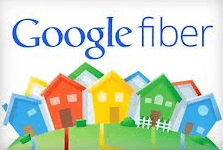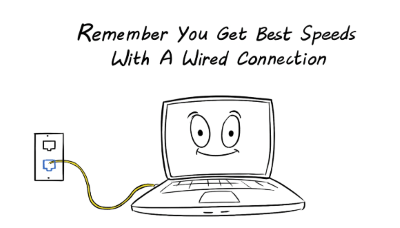 Further expansion of Google Fiber appears to be on hold as the company contemplates moving away from fiber to the home service towards a wireless platform that could provide internet access in urban areas for less money.
Further expansion of Google Fiber appears to be on hold as the company contemplates moving away from fiber to the home service towards a wireless platform that could provide internet access in urban areas for less money.
The Wall Street Journal today reports Google parent Alphabet, Inc., is looking to cities to share more of the costs of building faster broadband networks or using cheaper wireless technology to reach customers instead.
Six years after Google first announced it would finance the construction of fiber to the home networks, the company has made progress in wiring just six communities, many incompletely. Progress has been hampered by infrastructure complications including pole access, permitting and zoning issues, unanticipated construction costs, and according to one Wall Street analyst, the possibility of lack of enthusiasm from potential subscribers.
Google’s recent acquisition of Webpass, a company specializing in beaming internet access over fiber-connected wireless antennas between large multi-dwelling units like apartments and condos appears to be a game-changer for Google. Webpass was designed mostly to service urban and population dense areas, not suburbs or neighborhoods of single-family dwellings. Webpass’ reliance on wireless signals that travel between buildings removes the cost and complexity of installing fiber optics, something that appears to be of great interest to Google.
Google Fiber is planning a system that would use fiber for its core network but rely on wireless antennas to connect each home to the network, according to a person familiar with the plans. Alphabet chairman Eric Schmidt said at the company’s shareholder meeting in June that wireless connections can be “cheaper than digging up your garden” to lay fiber. The only question is what kind of performance can users expect on a shared wireless network. Google’s plans reportedly do not involve 5G but something closer to fixed wireless or souped-up high-speed Wi-Fi. A web video on Webpass’ website seems to concede “you get best speeds with a wired connection.”

Even Google’s wireless technology solutions provider Webpass concedes that wired broadband is faster.
Former Webpass CEO Charles Barr, now an Alphabet employee, argues wireless solves a lot of problems that fiber can bring to the table.
“Everyone who has done fiber to the home has given up because it costs way too much money and takes way too much time,” Barr said.
Barr’s statements are factually inaccurate, however. Fiber to the home projects continue in many cities, but if they are run by private companies, chances are those rollouts are limited to areas where a proven rate of return is likely. Large incumbent phone and cable companies are also contemplating some fiber rollouts, at least to those who can afford it. Many of the best prospects for fiber to the home service are customers in under-competitive markets where the phone company offers slow speed DSL and cable broadband speeds are inadequate. Rural communities served by co-ops are also prospects for fiber upgrades because those operations answer to their members, not investors. Community broadband projects run by local government or public utilities have also proven successful in many areas.
 But like all publicly traded companies, Google must answer to Wall Street and their investors and some are not happy with what they see from Google Fiber. Craig Moffett from Wall Street research firm MoffettNathanson has rarely been a fan of any broadband provider other than cable operators and Google Fiber is no different.
But like all publicly traded companies, Google must answer to Wall Street and their investors and some are not happy with what they see from Google Fiber. Craig Moffett from Wall Street research firm MoffettNathanson has rarely been a fan of any broadband provider other than cable operators and Google Fiber is no different.
“One can’t help but feel that all of this has the flavor of a junior science fair,” Moffett said of Google Fiber, pointing out the service has managed to attract only 53,000 cable TV customers nationwide as of December. Moffett concedes there are significantly more broadband-only customers signed up for Google, but that didn’t stop him from suggesting Google Fiber has had very little impact on increasing broadband competition across the country.
Analysts suggest Google Fiber is spending about $500 per home passed by its new fiber network. But that is a fraction of the $3,000+ per customer often spent by cable operators buying one another.
Google’s wireless deployment will likely take place in Los Angeles, Dallas, and Chicago according to people familiar with the company’s plans. Less dense cities slated for Google Fiber including San Jose and Portland, Ore., may never get any service from Google at all, but they are likely to hear something after a six month wait.
Google is also reportedly asking cities if the company can lease access on existing fiber networks. Another tactic is requesting power companies or communities build fiber networks first and then turn them over to Google to administer. The latter seems less likely, considering there are successful public broadband networks operating on their own without Google’s help.


 Subscribe
Subscribe
Google fiber always had a Willy Wonka aspect of unreality to it. The broadband crisis has never been that people in urban areas are stuck with 50mbps cable but that people in rural areas are stuck with 2mbps DSL. The $3000 per customer valuation comes from cable being a non-competitive business; the economic case for overbuilding is awful. As much as we like fiber, cable upgrades easily to DOCSIS 3.1 which is awfully good. Google though is part of the plan of disinvestment in rural areas that is the flip side of overinvestment in places like Palo alto, London, etc.… Read more »
The wheat fields of the Dakotas will probably never get fiber to the home. The cost per mile to install even on the electric poles is to high relative to the revenue generated. That cost does not change if a for profit company installs it or a non profit of government agency installs it. There will be areas where wireless will be the only cost effective option.
@Lee. the place where Broadband goes to die is the U.S. is the Appalachian Mountain region where the wireless option that both government and Wall Street favor so much is not an option. The terrain in this area is often a dissected plane which means that there is never a hill that is higher than the other hills, so getting a line of sight into the valleys would be a matter of making a road over every other hilltop, running power and fiber over the hilltop, erecting a 120 foot high tower and only serving a few houses in the… Read more »
The same reason areas like that do not have natural gas service. To expensive to trench solid rock to put in underground gas lines. You use propane or fuel oil. They can put coax or fiber on the electric poles. Payback on the investment is the issue. Good luck convincing people in New York, Chicago, Los Angeles for example to fund that installation. They will vote their pocketbook first which is logical.